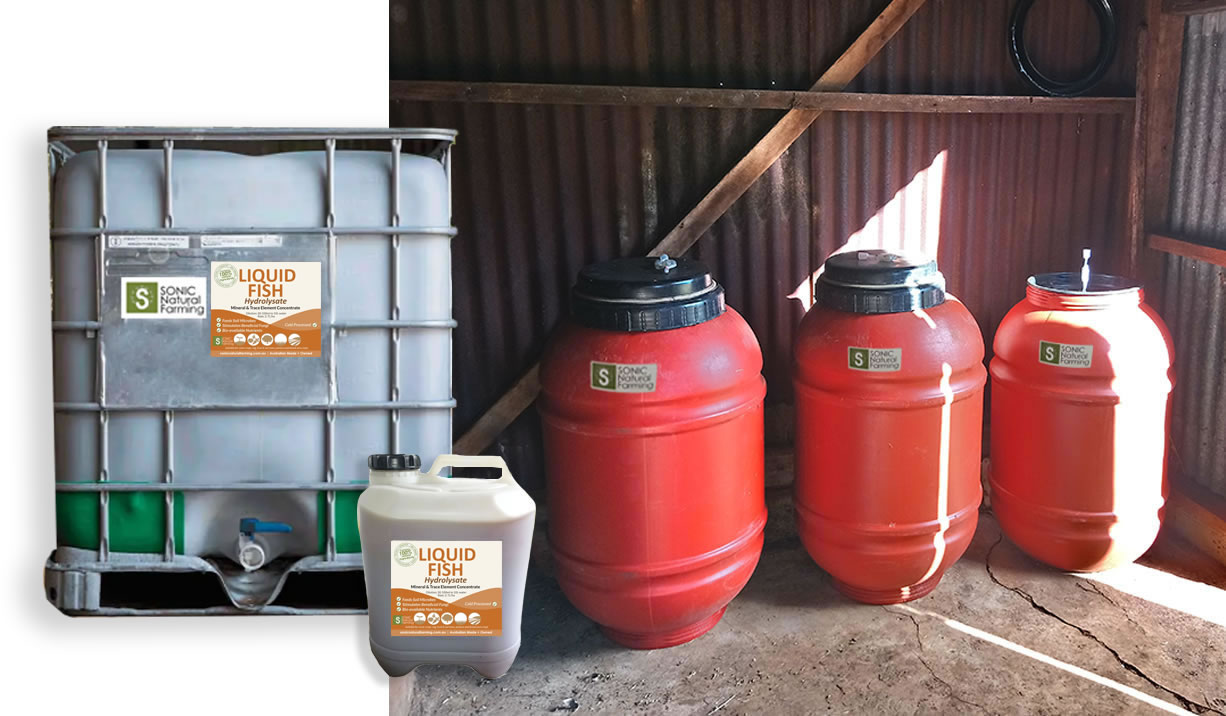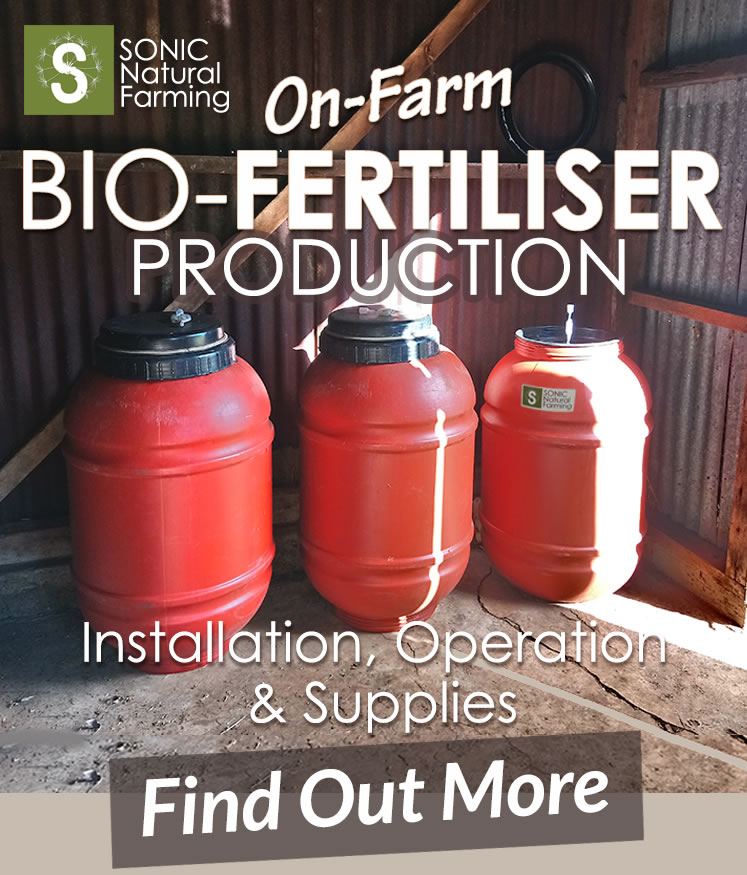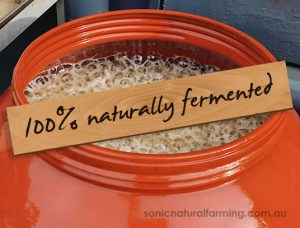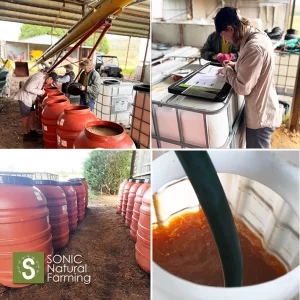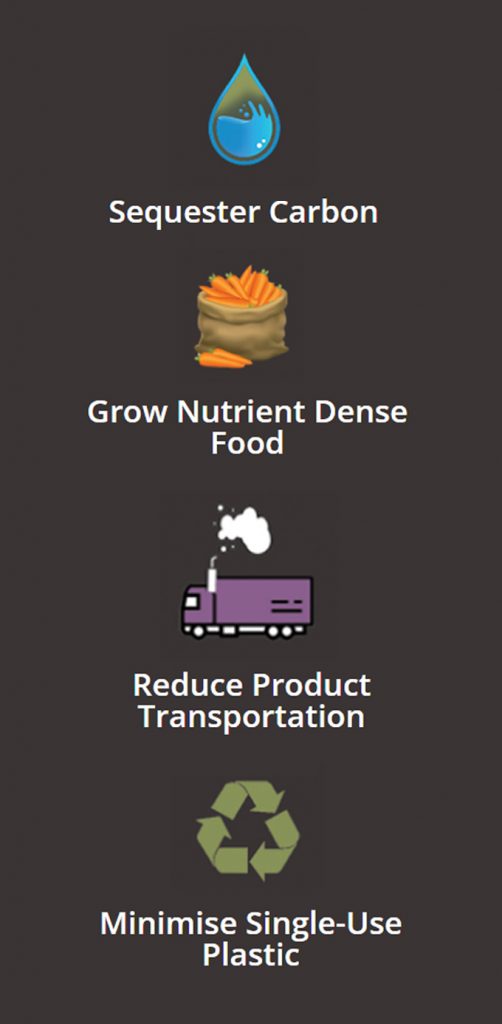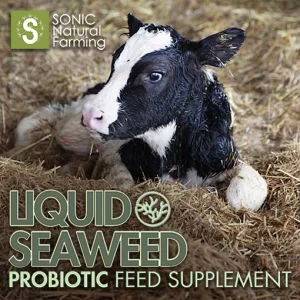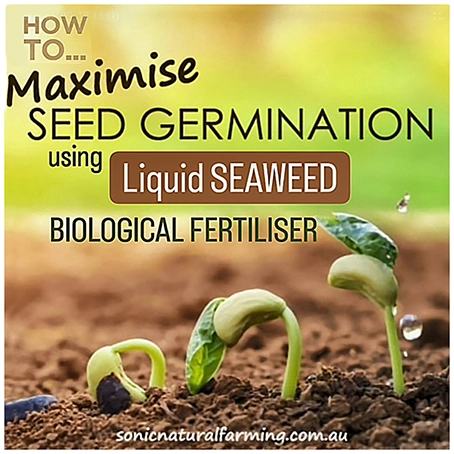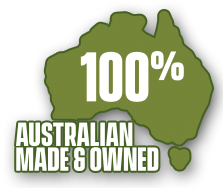As the world becomes increasingly aware of the importance of sustainability, many farmers are moving away from using chemical nitrogen and toward organic nitrogen options like Fish Hydrolysate. In this article we uncover a few reasons why;
1. Manufacturing of Chemical Fertiliser has a Heavy Emissions Toll
The manufacturing process of chemical fertilisers has a significant impact on emissions. Chemical nitrogen fertilisers, in particular, contribute to greenhouse gas emissions and environmental degradation.
Chemical nitrogen fertilisers are synthesized using energy-intensive processes that require the use of fossil fuels. Ammonia, a nitrogen-containing compound, has to be made at a high pressure under high temperatures—meaning it takes a lot of energy to manufacture. Most of that energy comes from burning fossil fuels like coal and methane gas, which give off CO2 greenhouse gas.
The production of these fertilisers releases large amounts of carbon dioxide (CO2) and nitrous oxide (N2O) into the atmosphere, both of which are potent greenhouse gases that contribute to global pollution.
Low to No Pollution Nitrogen Fertiliser Options
In contrast, organic fertilisers offer a more sustainable alternative. One such example is fish hydrolysate, which is derived from fish waste or byproducts. Fish hydrolysate is rich in nutrients and provides a natural source of nitrogen for plants. Unlike chemical fertilisers, the manufacturing process for fish hydrolysate typically involves less energy consumption and emits fewer greenhouse gases.
By transitioning from chemical nitrogen fertilisers to organic alternatives like fish hydrolysate, we can reduce the emissions toll associated with the manufacturing process while still providing essential nutrients to support plant growth. This shift towards more sustainable practices in agriculture can contribute to mitigating global pollution and promoting environmental stewardship in the long run.

2. Chemical Nitrogen use is a Leading Cause of Water Pollution
Chemical nitrogen use has a significant impact on waterway systems, and understanding its effects is crucial for environmental conservation and regenerative agriculture. Nitrogen is an essential nutrient for plant growth, but when it is used in a synthetic form, and enters waterways in excessive amounts, it can lead to harmful consequences.
Chemical nitrogen primarily enters waterways through agricultural runoff and wastewater discharge. Chemical fertilisers used in agriculture often contain high levels of nitrogen, which can be washed away by rain or irrigation.
Synthetic Nitrogens Harmful Consequences
Once in the waterway system, chemical nitrogen can cause various problems. One of the most concerning issues is eutrophication, where excessive nutrients stimulate the growth of algae and other aquatic plants. This overgrowth depletes oxygen levels in the water as these organisms decompose, leading to hypoxic conditions that harm fish and other aquatic life.
Additionally, chemical nitrogen can contribute to the formation of harmful algal blooms (HABs). Some species of algae produce toxins that are detrimental to both aquatic ecosystems and human health. These toxins can accumulate in shellfish or contaminate drinking water sources, posing risks to wildlife and human populations.
How To Mitigate Harmful Consequences of Synthetic Nitrogen
To mitigate the impact of chemical nitrogen on waterway systems, proper management practices are essential. This includes implementing responsible agricultural practices such as regenerative farming techniques and reducing or eliminating synthetic fertiliser application rates.
Furthermore, raising awareness about the importance of reducing chemical nitrogen inputs among farmers, policymakers, and the general public is vital for long-term environmental sustainability. By understanding the consequences of excessive chemical nitrogen use on our waterway systems, we can work towards implementing effective solutions that protect these valuable ecosystems for future generations.

“If we want clean water, we have to get the biology back in our soils. If we want to grow and harvest crops, we have to build soil and fertility with time, not destroy it. The only way to reach these endpoints is to improve the life in the soil.”
– Dr. Elaine Ingham.
3. Organic Nitrogen has Long-Term Beneficial Effects
Studies have shown that because organic nitrogen, such as Fish Hydrolysate, helps to build soil biology, it is therefore more effective in the long term, than chemical nitrogen. Anything that damages soil biology, such as high quantities of UAN fertiliser, pesticides and fungicides, are going to have long-term negative effects on soil health and overall productivity.
Liquid Fish Hydrolysate, derived from the cold processing of fish waste, is gaining recognition as an effective organic nitrogen source in agriculture and gardening.
High Organic Nitrogen and Essential Minerals
Fish hydrolysate is rich in essential nutrients such as nitrogen, phosphorus, potassium, and trace minerals. Its high nitrogen content makes it a valuable source for promoting healthy plant growth and development. Unlike synthetic fertilisers that can have negative environmental impacts, liquid fish hydrolysate is an environmentally friendly choice due to its organic nature.
Soil Improvers
One of the long-term benefits of using liquid fish hydrolysate is its ability to improve soil health. It enhances microbial activity in the soil, promoting nutrient cycling and improving overall soil fertility. The presence of beneficial microorganisms helps break down organic matter into plant-available nutrients, creating a more nutrient-rich environment for plants to thrive.
Crop Resilience
Furthermore, regular application of liquid fish hydrolysate can enhance plant resilience against diseases and pests. The amino acids and other bioactive compounds present in fish hydrolysate stimulate plant defense mechanisms, making them less susceptible to common pathogens and insect attacks.
Enhanced Root Development
Another advantage lies in its ability to enhance root development. Naturally cold processed liquid fish hydrolysate promotes root elongation and branching, leading to stronger root systems that can access nutrients more effectively from the soil.
Additionally, using liquid fish hydrolysate as an organic nitrogen source can contribute to sustainable farming practices by reducing reliance on synthetic fertilisers. This reduces the risk of nutrient runoff into water bodies and minimises environmental pollution.

Avocado farm, Central Coast, NSW, Australia, using SONIC Fish Hydrolysate and Liquid Seaweed Biological Fertiliser, and regenerative farming principals, for the first 4 years since planting in 2018.
4. Organic Nitrogen Inputs are Cost Effective
Only 10-40% of chemical nitrogen is taken up by plants because it is highly mobile. This means 60-90% goes elsewhere, like into waterways. Chemical nitrogen does not accumulate in soil in the form of a nitrogen bank, which means most of your financial input is literally going down the drain.
Organic Biological Fertilisers are derived from natural sources such as fish, seaweed, and plant-based materials. These fertilisers contain beneficial microorganisms that enhance nutrient availability and soil health. By utilising these natural inputs, farmers can gradually reduce their dependence on costly chemical-based fertilisers, thereby minimising costs associated with purchasing and applying synthetic products.
Build Soil Biology Over Time
One of the key advantages of organic biological fertilisers is their ability to improve soil structure and fertility over time. The microorganisms present in these fertilisers break down organic matter into essential nutrients that are readily absorbed by plants. This promotes healthy root development, enhances nutrient uptake efficiency, and ultimately leads to improved crop yields.
Reduced Chemical Runoff
Moreover, organic biological fertilisers contribute to the overall sustainability of agricultural systems by reducing nutrient runoff and groundwater contamination. Unlike synthetic fertilisers that can leach into water bodies and cause ecological imbalances, organic alternatives release organic nutrients slowly and in a more controlled manner.
As farmers develop their soil ecosystem, the application of biological inputs can be reduced, while still achieving optimum crop responses.
While transitioning to a completely organic system may take time and careful planning, incorporating organic biological fertilisers into existing farming practices is a step towards achieving a cost-effective regenerative agricultural system. By gradually reducing reliance on synthetic inputs and nurturing soil health through natural means, farmers can create resilient ecosystems that support long-term productivity while minimising environmental impact.
5. Organic Nitrogen is Better for the Farmers Health
Exposure to chemical nitrogen can have detrimental effects on human health. It is important to understand the potential risks associated with this compound and take necessary precautions to minimise exposure.
Lung Implications
Exposure to chemical nitrogen can lead to a range of health problems. Inhalation of nitrogen-based compounds can cause respiratory issues such as coughing, wheezing, and shortness of breath. Prolonged exposure may result in more severe conditions like bronchitis or even asthma.
Skin Problems
Skin contact with chemical nitrogen can cause irritation, redness, and in some cases, dermatitis. It is crucial to avoid direct contact with these substances and take proper safety measures such as wearing protective gloves and clothing.
Long-term exposure to chemical nitrogen has been linked to potential reproductive issues and developmental disorders. Pregnant women should be particularly cautious as exposure during pregnancy may pose risks to the developing fetus.
How to Mitigate Risk of Over Exposure
To minimise the risk of health problems associated with chemical nitrogen exposure, it is essential to follow common sense alongside safety guidelines and use, and wear appropriate protective equipment when handling or working around these substances. Regular monitoring of air quality in industrial settings where chemical nitrogen is used is also crucial for maintaining a safe working environment for employees.
By contrast, organic nitrogen, in the form of Fish Hydrolysate is safe for use by humans and does not negatively impact human health or the environment.

6. Synthetic Fertiliser is Detrimental to the Digestion of Ruminants and all Types of Microorganisms
Plants that grow in highly synthetically fertilised soil are commonly deficient in iron, zinc, carotene, vitamin C, copper and protein.
Chemical nitrogen fertilisers, often referred to as synthetic fertilisers, have long been used in agricultural practices to enhance crop growth and increase yields. However, recent research has shed light on the detrimental effects of these fertilisers on the digestion of ruminants and various types of microorganisms.
High quantities of synthetic fertilisers can damage the natural makeup of soil in the long term by destroying beneficial microorganisms and increasing the nitrate levels of soil. Plants produced from such soil, upon consumption, convert into toxic nitrites inside the intestines.
Gut Microbiome Disruptions
Ruminants, such as cows and sheep, have a unique digestive system that relies on a complex network of microorganisms in their rumen to break down plant fibers and extract nutrients.
Unfortunately, the excessive use of chemical nitrogen fertilisers can disrupt this delicate ecosystem. These fertilisers contain high levels of nitrates that can accumulate in plants. When ruminants consume these nitrate-rich plants, it can lead to an overabundance of nitrates in their digestive system.
Reduced Feed Efficiency
Excessive nitrate levels can inhibit the growth and activity of beneficial microorganisms in the rumen. These microorganisms play a crucial role in breaking down complex carbohydrates into simpler forms that ruminants can digest. When their population is disrupted by chemical nitrogen fertilisers, it can result in reduced feed efficiency and nutrient utilisation by ruminant animals.
To mitigate these negative effects, alternative farming practices, and products, are being explored. Organic farming methods that rely on natural sources of nitrogen like Fish Hydrolysate, are gaining popularity as they promote a healthier balance between soil fertility and animal digestion.
7. Chemical Nitrogen Inhibits the Formation of Soil Aggregates
 Why are soil aggregates important?
Why are soil aggregates important?
Microorganisms called diazotrophs use an enzyme (nitrogenase) to fix free-living nitrogen. The enzymes break the bond of N2 and make it available to the plant in a plant available form.
The only place in the soil where microbes can break the bond is in specialised micro-aerobic fixation sites, found within rhyzosheaths and water-stable aggregates. This is where soil particles are bound to the roots by biotic glues.
Fine feeder roots feed into the root aggregates and help the plant get all the nitrogen that it needs
Ammonium, urea, or any form of nitrate, applied in large quantities (ie. over 20kg per acre), inhibits the formation of these important fixation sites.

How to know if microbes are fixing free-living nitrogen in your soil
Dig up some plant roots, and see if there is evidence of aggregation, and coated roots. If there is, then nitrogen fixing is taking place. If the roots are bare and clean then there is too much oxygen around them for the necessary fungal networks to form and for diazotrophs to fix free-living nitrogen.
Note; some plant species do not form rhizosheaths, such as cultivars in the brassica, allium & asparagus family.
It is the fungal energy channels and the interaction of microorganisms between plants, plant roots and soil, that create the plant nutrition acquisition
Mineral analysis soil tests won’t show free-living nitrogen. Soil mineral tests can be misleading for this reason and may lead a farmer to believe the soil needs nitrogen, when what it really needs is biology. Read article ‘Why Your Soil Needs Biology More Than Minerals’.
Regenerative farmers that have been using organic inputs, like naturally fermented Biological Fertilisers, byodynamic preps. and or worm juice, are seeing over time that they have better crop resilience, the nutrient density of their produce is higher and with reduced input costs, their farming enterprise becomes more profitable.
RELATED EXTERNAL LINKS
Regenerative Farming Educational Videos


 Why are soil aggregates important?
Why are soil aggregates important? 
